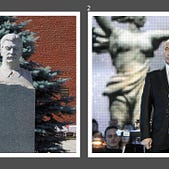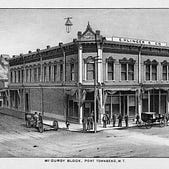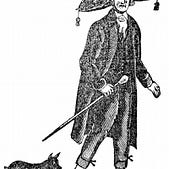5 Victorian Inventions That Shaped the World We Live In Today
And without whom everyday life would be hard to imagine.

 The Victorian Era was a time of industrial, economic, scientific, and educational boom. Some changes were positive, some negative, some permanent, some temporary, but one thing is sure — after the Victorian Era, the world was not the same.
The Victorian Era was a time of industrial, economic, scientific, and educational boom. Some changes were positive, some negative, some permanent, some temporary, but one thing is sure — after the Victorian Era, the world was not the same.
And even today, the impact of those changes can be felt. These are five Victorian inventions that shaped the world we live in today.
Lights, Camera, Action!

The invention of moving pictures happened in a few significant steps, but it all started with a bet. In 1878, English photographer, Eadweard Muybridge, took sequential photographs of a horse in full gallop. The pictures were taken to settle a bet between Leland Stanford, a businessman, and his friends. Thanks to the photographs, Stanford, who claimed that at one point the horse’s all four hooves were in the air, won the bet.
Only one year later, the zoogyroscope, a projector of sequential photographs, was presented to the public by Muybridge and Stanford, who were now business partners.

The zoogyroscop was followed by the invention of chronophotography by Etienne-Jules Marey, where a camera took 12 photos per second of an object in motion. And in 1890, Thomas Edison and William Dickson presented the Kinetograph, a simple motion picture camera.
Today, it is hard to imagine life without movies, advertisements, home videos, social media, news, and even YouTube — all of which wouldn’t be possible without the invention of moving pictures.
This Item Was Once a Killer

At the beginning of the Victorian Era, milk was not pasteurized and contained Bovine Tuberculosis. Bovine TB caused severe damage to internal organs and the spine leaving many with deformities. Since unpasteurized milk spoiled fast, Boracic acid, a toxic substance that causes sickness and diarrhea, was used to conceal the bad taste and smell. For that reason, around 500,000 children died from milk during the Victorian Era.
Then, in the 1860s, French scientist Louis Pasteur proved how the fermentation of beer and wine could be stopped by heating them to 57°C (135°F) — and the pasteurization process was born. Today, the temperature regulation for pasteurizing milk is slightly higher, but without Louis Pasteur, even a cup of coffee that millions of people drink first thing in the morning could be lethal.
The Transportation Game-changer

In 2021, around 66,7 million cars have been sold around the world. This year, “the global aircraft fleet is expected to have 25,578 aircraft in service worldwide.” And there is one thing cars, planes, bikes, motorbikes, buses, and trucks have in common — rubber tires. Without them, the transportation of people, goods, and services would basically be non-existent.
In 1844, American engineer Charles Goodyear patented “vulcanization.” During the process of vulcanization, the rubber was heated and sulfur added. As a result, the rubber would maintain its elasticity but become water- and winter-proof.
One year later, Robert William Thomson invented and patented the vulcanized rubber inflatable tire. In the next years, more affordable and practical versions of the rubber tire followed.
Medicine Wouldn't Be the Same Without This

Our medicine of today would be hard to imagine without the use of X-rays. From diagnosing tumors, breast cancer, broken bones, pneumonia, kidney stones, heart problems, and more, the results of X-ray scans are often life-saving. But what many may not know is that X-rays were discovered by accident.
In 1895, Wilhelm Roentgen, a physics professor, was experimenting with cathode rays when he accidentally found how the green light penetrated even through the thick black paper in which his cathode tube was covered. He also found how those same green lights could project shadows of solid objects. Roentgen called the rays “X” since he didn’t know what they were.
The news of his discovery spread quickly, and by 1896, X-rays were widely used in Europe and the US. In 1901, Wilhelm Roentgen received the first-ever Nobel Prize in physics for his discovery.
Communication is Key

“Mr. Watson, come here. I need you.”
Those were the first words communicated over a wire between Alexander Graham Bell and his assistant, Thomas A. Watson, sitting in nearby rooms. Until 1875, the only way of conveying messages from a distance was through a telegraph transmitter that sent the message through a wire.
But then, Alexander Graham Bell, once a teacher of the deaf, figured out how to send a simple current and then human speech over that same wire. On March 7, 1876, Bell patented his invention — and the telephone was born.
Until today, the telephone is considered one of the most important inventions in human history. On August 2, 1922, when Alexander Graham Bell was buried, all US telephone services went silent for one minute in his honor.
Sources: BBC, American Experience, Britannica, CEW & Columbia Surgery.










